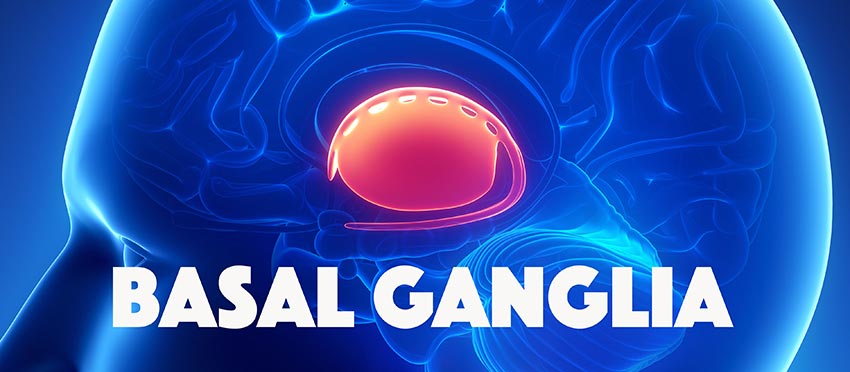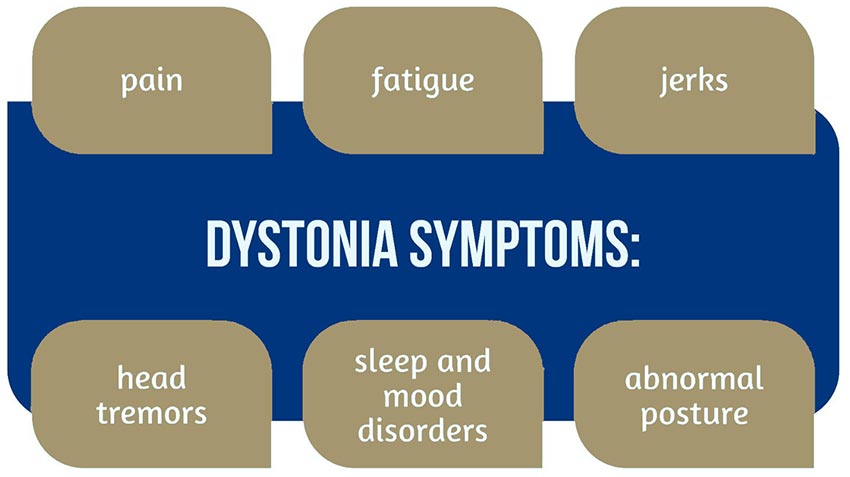What Is Cervical Dystonia?
Cervical dystonia is a neurological disorder that causes the brain to send abnormal signals to the muscles in the body. This disruption can lead to painful, involuntary contractions of the neck muscles that cause a baby's head to twist or turn to one side making it difficult for them to maintain a stable position.

The exact cause of cervical dystonia is not fully understood. However, certain injuries at birth or medication errors, may increase a newborn's risk of developing this disorder. A child diagnosed with this condition may require extensive treatment and ongoing care for the rest of their life. Additionally, there may be various other indirect effects associated with this disability that your child will encounter throughout early childhood and into adolescence.
In some cases, the muscle contractions may persist for a prolonged period, causing the head to become stuck in an abnormal position. In other cases, the contractions are more like tremors, occurring for only brief periods. Being stuck in one position for a prolonged period can be incredibly uncomfortable and put constant strain on the neck and back muscles. As children with cervical dystonia grow older, the type and severity of the symptoms they experience may change.
Cervical dystonia, also known as spasmodic torticollis, is a rare neurological disorder that causes painful, involuntary contractions of the neck muscles as well as abnormal posturing or positioning of a body part. Although this is a rare condition, affecting only around 60,000 people in the United States those who suffer from it are all too familiar with the physical discomfort and social challenges it presents.
Other types of neurological issues, like cerebral palsy, may also accompany this condition. One of the leading causes of cervical dystonia is dyskinetic cerebral palsy. Once someone develops this condition, it is more or less permanent, and while there is no cure for this condition, there are treatments that may offer temporary relief.
According to the National Organization for Rare Disorders (NORD), women between 40 and 60 years of age are more frequently affected by this disorder. Given that cervical dystonia typically arises during middle age, if it occurs in infancy, "secondary causes" such as a birth injury may be to blame.
The financial burden of cervical dystonia can be substantial, as families often face high costs related to medical care, physical therapy, medications, and any necessary surgical interventions. When a healthcare provider fails to uphold the accepted standard of care during childbirth and it causes a birth injury like infant cervical dystonia, the infant's family may be entitled to financial compensation.
Birth Injury Lawyers
1-888-987-0005If you believe your child's cervical dystonia may be linked to medical negligence, it's important to seek the advice of an experienced birth injury attorney as soon as possible. At Miller Weisbrod Olesky, our team of skilled and compassionate birth injury lawyers understand that caring for a child with this disorder often demands significant time, energy, and emotional resources.
We are committed to taking the time to listen to your story, thoroughly investigating the circumstances surrounding your child's diagnosis, and building a strong case to support your claim.
What Causes Cervical Dystonia?
The exact cause of cervical dystonia is often unknown, and treatment typically focuses on managing symptoms rather than addressing underlying issues. However, while some uncertainty exists regarding its development, some research suggests that injury to the part of the brain that regulates muscle movements (basal ganglia) may be a contributing factor.

Additionally, researchers have identified specific gene mutations associated with the disorder, suggesting that some individuals with cervical dystonia may have a genetic predisposition to the condition.
Cervical dystonia can also stem from various other factors, including:
- Congenital spine abnormalities
- Injuries to the brain
- Exposure to certain environmental toxins
- Brain lesions or abnormal growths
- Infections affecting the spine or brain
Injury to the basal ganglia may result in dyskinetic cerebral palsy or other movement disorders. Such injuries can occur when a child's oxygen supply is restricted during pregnancy, delivery, or soon after birth. Infant cervical dystonia can also be caused by a doctor who applies excessive force on the baby's head during delivery.
Types of Cervical Dystonia
Cervical dystonia can be classified into several types based on the pattern and directions of abnormal head and neck movements the affected individual experiences. These types are generally divided into primary and secondary dystonia. Secondary dystonia is the most prevalent form and is often linked to conditions such as cerebral palsy. In contrast, primary dystonia, which is less common, usually arises from a genetic disorder.

Here are the various forms of cervical dystonia:
- Torticollis: This is the most common type, and individuals with torticollis typically experience a twisting of the neck that causes the chin and nose to turn toward one shoulder. This involuntary muscle contraction can cause the affected individual to stay in this position (tonic) or turn to the side only intermittently (clonic).
- Laterocollis: This is the second most common type of dystonia, characterized by the titling of the head to one side and the ear pulled down to the shoulder. Those affected by this condition may also encounter head tremors.
- Retrocollis: With this type, the head tilts backward toward the spine with the neck extended. Retrocollis makes it difficult for the afflicted person to keep their head centered or turn it to the opposite side.
- Anterocollis: Here, the head tilts forward, causing the child to be pulled down toward the chest. Individuals affected by this type of dystonia may struggle to coordinate the muscles necessary for swallowing, increasing the risk of choking, while muscle spasms can lead to slurred speech.
It is not uncommon for individuals with cervical dystonia to experience more than one form (combination type). For example, a person diagnosed with torticollis may also exhibit symptoms of anterocollis. In this scenario, the individual may display the characteristic head rotation typical of torticollis, while also experiencing a forward tilt of the head commonly associated with anterocollis, which causes the chin to be drawn downward toward the chest.
Additionally, in some cases, a person living with cervical dystonia may primarily experience tremors in the head or neck instead of fixed postures or abnormal positions. Understanding the various forms of cervical dystonia can help healthcare providers develop more effective treatment and management strategies.
Symptoms of Infant Cervical Dystonia
Cervical dystonia can present a range of symptoms in infants that cause varying degrees of disability. While some infants may exhibit few symptoms or mild discomfort, others might suffer significant disability and chronic pain that requires ongoing treatment.

Although most cases develop gradually, some infants may experience a sudden onset of symptoms. In infants, one of the first signs of cervical dystonia is involuntary movement of the head and neck resulting from over-activity of the affected muscles. In some cases, the involuntary muscle contractions can spread to other parts of the body, including the face, arms, jaws, and trunk.
Signs and symptoms a child who suffers from this condition may experience include:
- Jerking or spastic head motions
- Twisting or tilting of the neck
- Elevation of the shoulder toward the ear
- Unusual neck muscle tightness
- Neck pain that extends down the shoulders
- Headaches
- Reluctance to turn the head during play or when called
- Hand or head tremors
- Head tilting or twisting to the sides
- Head tipping forward or backward
- Uneven hair loss on one side of the head
- Delayed or irregular development of motor skills
- Difficulty feeding from one breast or side of the bottle
- Numbness, weakness, and tingling in the hands, arms, feet, or legs
- The chin moving toward one shoulder or straight up and down
As they cannot verbalize their discomfort, recognizing cervical dystonia in babies can be challenging. However, clear signs often become evident shortly after birth. If parents notice signs or symptoms of cervical dystonia in their baby, they should schedule an appointment with a pediatrician as soon as possible.
Early diagnosis is essential for effectively managing the condition and ensuring the best outcomes for your child. Additionally, parents should keep a detailed record of their child's symptoms, including any patterns or changes they observe, as this information can assist healthcare professionals in making an accurate diagnosis.
Diagnosing Cervical Dystonia at Birth
When parents suspect that their infant may have cervical dystonia, they may reach out to pediatricians, pediatric neurologists, or motor disorder specialists to get their child tested. A thorough examination typically includes:
- A detailed neurological assessment.
- A comprehensive physical examination to evaluate the infant's muscle tone and movement patterns.
- A review of the child's medical history to identify any relevant familial or developmental factors.

Additionally, the doctor may order diagnostic tests that include blood tests, genetic evaluations (if hereditary factors are suspected), MRI (magnetic resonance imaging), and EMG (electromyography) to measure electrical activity in skeletal muscles. If diagnosed, a doctor will typically prescribe treatments based on the child's age, overall health, and the severity and type of cervical dystonia.
Treatment Options for Infant Cervical Dystonia
Currently, medical researchers have not found a cure for cervical dystonia. In fact, the National Institute of Neurological Disorders and Stroke (NINDS) indicates that while approximately 10% of individuals diagnosed may find that their condition improves over time, it is not guaranteed to last.

The impact of cervical dystonia varies significantly between individuals, with some able to effectively control their symptoms while others struggle with a more debilitating form of the condition. Despite the challenges posed by cervical dystonia, there are treatment options available that may allow those affected to lead more functional and comfortable lives.
Common treatments for alleviating symptoms of cervical dystonia may include:
- Botulinum toxin injections: Administered every few months to reduce muscle spasms by blocking the neurotransmitter that causes muscle contractions.
- Oral medications: Such as muscle relaxants and anticonvulsants to help manage symptoms.
- Physical therapy: A doctor may recommend physical, occupational, and speech therapy to help relax muscles while improving range of motion and communication. Strength training exercises are often incorporated into physical therapy to improve muscle tone and overall strength. Additionally, exercises designed to enhance flexibility, and mobility may also be part of a physical therapy program.
- Deep brain stimulation: Involves placing an electrode in the brain area that controls movement to interrupt nerve signals. Nearly 75-80% of patients with cervical dystonia respond to this treatment, though it can take 6-12 months to see results.
- Surgery: to cut the offending nerves and muscles: In some cases, surgical options like selective denervation surgery may be a viable option. This procedure involves carefully identifying and severing the specific nerves that are sending abnormal signals from the brain to the spasming muscle groups.
It is imperative that children with this condition receive treatment during their developmental years to prevent permanent deformities of their bones. Addressing their symptoms early on can support optimal physical development and allow a child with this condition to participate more fully in their daily activities.
Healthcare providers can create tailored treatment plans that address the child's unique needs and continuously adapt these plans as the child gets older.
Medical Malpractice Leading to Cervical Dystonia at Birth
While various factors can contribute to infant cervical dystonia, medical negligence during childbirth is a common culprit. When healthcare providers fail to adhere to established standards of care, and it results in harm to a mother or her newborn, the consequences can be devastating.

Understanding the specific ways in which medical malpractice can lead to this condition is essential for ensuring that affected families can seek justice and compensation for their losses.
Here are some examples of how medical malpractice can lead to infant cervical dystonia:
- Failing to recognize and treat prenatal conditions like preeclampsia or gestational diabetes can increase the risk of birth complications.
- Neglecting to take necessary precautions to ensure a safe delivery, such as opting for a Cesarean section (C-section) when necessary, can increase the risk of an infant suffering birth-related trauma.
- Using excessive force during delivery, either manually or with tools like forceps or vacuum extraction devices, can injure the delicate structures in the infant's neck and spine and disrupt the normal functioning of the nervous system.
- Delaying intervention when an infant's shoulder becomes stuck behind the mother's pelvic bone (shoulder dystocia) can compromise the infant's oxygen supply, resulting in birth asphyxia.
- Applying excessive pressure on the brachial nerves during complicated deliveries can disrupt the normal signaling between the brain and the muscles, potentially leading to abnormal muscle contractions and spasms.
- Failing to address signs of fetal distress promptly and allowing prolonged oxygen deprivation can lead to brain damage affecting areas responsible for motor control and coordination.
- Not promptly diagnosing or effectively treating infections in the mother that can trigger an inflammatory response and adversely affect fetal brain development.
- Prescribing medications like antipsychotic drugs or medicines that block dopamine production during pregnancy can interfere with neurotransmitter balance, leading to abnormal motor function and coordination once the child is born.
During difficult deliveries, everyone involved faces significant challenges and overwhelming emotions. However, doctors are still expected to stay calm in these situations, follow established medical protocols, and take appropriate action when necessary to ensure the safety of both mother and child.
When a medical professional fails to provide this level of care, the resulting harm can have lasting consequences. A birth injury lawyer can provide insight into the strength of your case and the potential for pursuing compensation for the injuries sustained during your complimentary case review.
Who Can Be Held Liable for Infant Cervical Dystonia?
In cases where medical intervention is involved, determining liability for infant cervical dystonia typically involves assessing the actions of any healthcare providers involved in the care of the mother and infant during prenatal visits, labor, and delivery. Various parties may share responsibility for cervical dystonia in infants.

These include:
- Obstetricians (OB-GYN)
- Other obstetric professionals
- Surgeons
- Pediatricians, including pediatric neurologists
- Anesthesiologists
- Labor and delivery nurses
- Midwives
- Nurses
- Hospitals and medical facilities
- Hospital administrators
- Other hospital staff
- Neonatal intensive care nurses and aids
- Neonatologists or pediatricians providing neonatal care
- Respiratory therapists
- Maternal-fetal medicine physicians and specialists (MFM)
- Laboratory staff
Hospitals can be held vicariously liable for injuries sustained by a newborn due to the negligent actions or omissions of an employee acting within the course of their duties. Additionally, a hospital may be directly liable for its own negligence.
For instance, a hospital could be found directly liable if it fails to implement adequate patient safety protocols or breaches patient confidentiality by improperly handling medical records. To ensure that all potential avenues for compensation are thoroughly explored and pursued effectively, we encourage you to reach out to one of our dedicated birth injury attorneys.
Compensation for a Birth Injury Claim
Cervical dystonia is a lifelong condition, and as ongoing treatment may be necessary, families grappling with this diagnosis often struggle to cover the cost of their child's medical care and associated expenses.
If it can be determined that a medical professional or healthcare facility's negligence during childbirth caused your child to develop cerebral palsy, financial compensation may be available to assist your family in providing your child with the necessary care. A birth injury lawsuit may allow your family to recover various types of compensation, which are generally divided into two main categories: economic and non-economic damages.

Economic Damages
Economic damages refer to the measurable financial losses stemming from the injuries.
- Medical bills and ongoing care costs (including past and future)
- Costs associated with rehabilitation and therapy, such as occupational, physical, speech, behavioral, and cognitive therapies
- Expenses related to extended nursing care
- Lost income for parents who need to take time off work to care for their child, including future wage losses
- Costs for medications
- Expenses associated with adaptive equipment and technology, such as hearing aids, specialized keyboards, and wheelchairs
- Lost earning capacity if the child's condition affects their future ability to work
- Costs for special education and tutoring
- Expenses related to home and vehicle modifications, like ramps or accessible bathrooms
- Costs for surgeries or other specialized treatments
- Diagnostic testing fees
Non-Economic Damages
Non-economic damages, on the other hand, address the intangible losses that significantly affect the child's and family's quality of life.
- Pain and suffering
- Reduced quality of life
- Loss of enjoyment of life
- Disability and physical impairment
- Disfigurement or permanent scarring
- Mental anguish
- Emotional distress, such as anxiety, depression, or post-traumatic stress disorder (PTSD)
- Loss of companionship or consortium
Punitive damages may be awarded in certain cases where the responsible party's actions are deemed especially negligent or reckless. Unlike compensatory damages, these damages are designed to punish the at-fault party for their actions and deter others from engaging in similar behavior.
Several factors influence the settlement amount you may receive, including the skepticism that juries and insurance adjusters may have toward these claims. Typically, considerations such as the severity of the condition, as well as the victim's age and medical history, play a significant role in calculating the amount and type of damages that may be awarded.
A birth injury lawyer can estimate the potential value of your claim by reviewing all relevant pieces of evidence, including medical records, expert testimony, and the long-term implications of the injury.
Statute of Limitations in A Texas Birth Injury Lawsuit

Statutes of limitations (SOL) are established by law in each state and dictate the timeframe within which a personal injury lawsuit must be initiated. Typically, the countdown begins on the date of the injury. However, the discovery rule provides an exception to this rule in cases where the injury was not immediately apparent.
Under this rule, the clock doesn't start ticking until the injured person discovers or reasonably should have discovered their injury. This can be confusing, so it's advisable to contact a knowledgeable birth injury attorney to discuss your and your child's legal rights and options.
According to Chapter 74 of the Texas Civil Practices & Remedies Code, there are several deadlines for filing a birth injury case in the state.
These include:
- For damages (other than medical expenses) incurred until age 18, a lawsuit must be filed by the time the child turns 14.
- To recover medical expenses for the child from birth until age 18, the lawsuit must be filed within two years of the date of the accident.
If the statute of limitations expires in your case, you may lose the opportunity to seek compensation. A medical malpractice lawyer can determine the specific deadlines that apply to your unique situation and ensure paperwork is filed on time.
Contact Our Birth Injury Lawyers Today

Although dealing with your child's birth injury and distressing prognosis may feel overwhelming, it's crucial to seek the support of an experienced birth injury attorney who will offer support in every way possible.
At Miller Weisbrod Olesky, our birth injury malpractice lawyers have extensive experience representing families affected by cervical dystonia and other birth injuries. We are committed to working tirelessly to help you secure the resources required for your child's ongoing care and support. Our firm operates on a contingency fee basis, meaning you won't owe us anything unless we successfully recover compensation for you.
This approach allows you to pursue justice for your child without the added stress of upfront legal fees. Don't face this challenging journey alone. Schedule your free consultation with one of our attorneys today, and let us help you confidently navigate the complex claim process. Call our offices at 888-987-0005 to begin your consultation.
